Predicting Political Systems Using Economic, Environmental, and Relational Variables
Journal: Social Evolution & History. Volume 15, Number 2 / September 2016
ABSTRACT
This article continues the elaboration of a multiple factor model for predicting the political systems that emerge in specific economic, environmental and relational contexts. While anthropologists have long sought to describe the emergence of ‘the state’ or of modern bureaucracies, only recently have predictive models of political systems begun to emerge. Political scientists have long upheld the ideology that ‘democratic’ political systems can simply be exported or created, independent of the economic and environmental context as well as the realities of military power of one's neighbors, or that systems where the contexts have changed can still be called ‘democratic’ even though none of the conditions or attributes of such systems continue to exist. The causal arrow for predicting political systems appears to be in reverse of the ideological dogma of contemporary social sciences that generally seeks to deny the principles of evolutionary adaptation. Political systems appear to arise historically as a function of contextual variables and not independent of them, though technologies that today can refashion eco-systems and economies can also establish some types of (mostly authoritarian) political systems.
The science of politics in this piece presents an alternative to the ideological (and theological, anti-evolutionary) approaches of contemporary ‘political science’.
INTRODUCTION
Some four decades ago when anthropologist Marvin Harris presented a theory to explain (and predict) the rise of empires and political inequalities based on geographic variables (ability to control hydraulic systems like the ‘Fertile Crescent’ of the Tigris and Euphrates, the Nile, and the Yellow River), he also noted that one of the major functions of political authorities, beyond storage and distribution, taxation for public works, and support of a military for purposes of control, would be ‘mystification’ (Harris 1977). In Harris' political anthropological model, the simpler the political reality and the more contradiction there was with internal needs of the system for its preservation (such as meritocratic competition in scientific and technological advancement in industrial societies), the more resources would need to be spent on the mystification in order to maintain the cultural system and the powers of the elite in the area of politics.
Contemporary descriptions of political systems by academics and by elites that claim systems to be ‘democratic’ or on the road to democracy if certain policies promoted by elites are followed, may confirm part of Harris' theory. Today, in anthropology and in much of the social sciences, Harris' objective scientific approach to predicting and describing political systems based on geographic and other measurable variables, rather than ideologies and beliefs, and his methodology of viewing societies (and cultures) by looking at structures and functions, have largely disappeared. It is not that his findings have been either displaced by other scientific theories that have greater explanatory power, nor that they have been refuted, though they certainly had imperfections and some contradictions as do many scientific theories in their early stages. Indeed, environmental and evolutionary approaches are now the mainstay of expanding biological and evolutionary sciences while the concept of structure and functions remains fundamental to biology. Human geographers have taken up the approaches using archaeological and social anthropological data (Diamond 2009). It seems that Harris' approaches and others like it have been made to disappear.
The science of political anthropology stops with ‘state formation’ in pre-history and currently makes few attempts to model and predict contemporary political systems using the same variables applied to history. In its place, leading political and legal anthropology journals offer ‘narratives’ and philosophical discourses of inequalities in place of scientific hypothesis testing and predictions to describe the causal factors of contemporary political systems.
Contemporary political science, meanwhile, sometimes offers ‘interest’ models of economic factors and psychological models to describe support for political systems, as well as studies of stratification, ethnicity and other variables, but there is little in the way of models that would explain political systems and their changes on the basis of natural variables. Much of political science rests, instead, on definitions and labels of systems with the ideological belief that systems are products of ‘consciousness’ and ethos that somehow ‘take root’. This kind of argumentation could easily be mistaken for a religious belief that seeks to refute the theories of evolution with the assumption that political systems are the product of human consciousness and that our fellow primates have not evolved social and political systems in their habitats, though we do now know that this is the case (Van der Waal 1982).
Given the absence of these approaches in those disciplines today, linguist Noam Chomsky has referred to ‘political science’ in similar terms to those used by Harris, to describe a function of ‘mystification’ or religion. In Chomsky's linguistic analysis, contemporary political ‘science’ is actually much closer to the definition of a ‘theology’ than a science and serves the function of ‘mystification’ to convince citizens that their hierarchical systems in which they have little real power comparable to those of institutions (like the military) and elites, are actually democracies and that political systems are all products of ‘free choice’ (Chomsky and Herman 1979).
This may now be the time to present these earlier theories once again, to summarize what has been discovered and to point to areas for future discovery as well as the implications.
The reason it may be possible to consider these issues again today is because public frustration with lack of responsiveness of political systems that are described as ‘democratic’ has led to now renaming them in political science and public policy literature as oligarchies or corporatist states, with the implication that political systems really are a reflection of the concentrations of economic and military power. There is now a recognition that political systems can be described by economic and technological variables rather than by the formal procedures of politics and law that may just be meaningless facades that are part of the mysticism to hide the ‘deep structures’ of actual political power.
A recent political science study, for example, now describes the United States not as a democracy but as a ‘civil oligarchy’; something close to a plutocracy (Gilens and Page 2014). Former Secretary of Labor and political economist Robert Reich has also written recently that ‘most Americans feel powerless and assume the political game is fixed’ (Reich 2014), hinting also that it is a corporatist rather than a democratic system. Frequently cited today is a political science study of the USA describing the system as totalitarian, in a form of ‘inverted totalitarianism’ or corporate control, not based on ideology of race but on simple market power and ‘cost effectiveness’ (Wolin 2003).
This article continues the elaboration of a multiple factor model for predicting the political systems that emerge in specific economic, environmental and relational contexts. Political systems appear to arise historically as a function of contextual variables and not independent of them, though technologies that today can refashion eco-systems and economies can also establish some types of (mostly authoritarian) political systems. The science of politics in this piece presents an alternative to the ideological (and theological, anti-evolutionary) approaches of contemporary ‘political science’.
This article identifies the social science factors that have been used to differentiate cultures and notes that these same factors can be used to describe and predict political systems. The article then takes some models that have disappeared, presents them again, builds upon them in conjunction with new theories and insights, and organizes what we know into a platform for scientific research to fill in the gaps.
Since this article surveys what is an entire field, offering a different approach to predicting political systems, the presentation is more of a broad skeleton based on existing but forgotten theories rather than detail testing for specific systems. For ease of presentation, many concepts are shown pictorially.
The article links geographic, economic, and technological variables to descriptions of political systems within communities, looking at systems statically and partly dynamically (to see which factors determine how they change), then looks at how similar factors can describe the political relations between cultures (in federal versus imperial systems), also static and dynamic, and for different levels of technology. In looking at change, the piece also comments on the evolutionary theories of political systems offered by Marx and Kuznets and shows how they failed to adequately incorporate real variables into their prediction.
Though this model can be used as a springboard for analysis of different political systems at the cultural and nation-state level, the article also notes some of the confusion that has occurred by failing to understand actual relationships between cultures. While all nation-states today are treated as if they have their own ‘governments’, the fact is that the dynamics of international relations is such that many so called ‘governments’ may really be ‘concessions’ on the model of corporate charters for control of resources within a boundary, with none of the formal requirements of a governmental political system.
Finally, the piece considers the implications of this kind of modeling for ‘democracy building’ projects and social movements as well as the philosophical implications of reversing the contemporary ideological approach to causality in describing political systems and their transitions.
BACKGROUND
There has long been a major disconnect in political anthropology and political science/anthropology between the models for identification and description of cultures in the past and those today. In distinguishing and defining cultures there is a clear set of explanatory variables rooted in geography, environment, technological development (dependent on geography and environment) and relations or ordering of peoples of different power (also dependent on geography and environment). These variables are used to describe history but only up to the formation of ‘states’ in pre-history. Once the question turns to modern societies, these variables are abandoned in much the same way that evolutionary biology allows for the study of all non-human primates with natural variables but then stops when it comes to humans and tries to avoid using the same causal arrows. It is as if there is a different set of principles (i.e., religious) applied to describing humans, in place of science.
Table 1 (modified from a form presented in Lempert 2014) lists, in rows, the different types of ‘stratification’ explanations (differentiation) of cultures that are familiar to most anthropologists and divides these approaches, with the use of two columns, as to whether they are ‘static’ explanations or ‘dynamic’ (incorporating for the possibility of transformative change out of the current categories, over time). The list starts with the most basic approach (classifying cultures by their geographic niches where they differentiated themselves from other human groups; i.e., how cultures mapped themselves onto the geography) and then includes factors of technological differentiation, political stratification in state systems (relative power), politico-economic (economic role) and then ideological differentiation.
These methods of stratification essentially offer the different variables that can be used to distinguish cultures and to array the different forms that can be differentiated by these variables. So far, these arrays have mostly been used to distinguish cultures from each other rather than to predict the types of cultures (and political, economic and social systems) that can be associated with the variables. Some of these variables already have been linked with political systems and will be noted and expanded in this article. Nevertheless, they have yet to be examined as part of a full multi-factor predictive model. Examination of all of the variables and linkages of these variables to clearly defined and differentiated political systems is beyond the scope of this article, but it at least establishes the framework for future research by noting the blanks that are to be filled in.
Table 1
Stratification Approaches in the Modeling of Cultural Relations: Theories and Authors by Factors of Stratification
|
Factors (Driving Forces) of Stratification |
Static Model |
Dynamic Model | |
|
1 |
2 |
3 | |
|
Geographic Segmentation |
Evolutionary niche strategies (Sahlins 1960; Leach 1954) |
Models of empire and collapse as resources are exhausted (Diamond 2005, 2009) | |
|
Technological Stratification |
Hunting-Agriculture-Industrial Revolutions, State Formation, etc. (Service 1975; Toffler 1980; Fernandez-Arnesto 2000) |
Not applicable other than in convergence, diffusion and assimilation models. Though linear evolutionary models are discarded, development theory supposes unidirectional adaptation of technology | |
|
Political Power Relations Stratification |
Complex social interaction of empires (Wolf 1982); Dependency Theory and Globalization (Gunder Frank et al. 1972; Wallerstein 1979) with ‘Client states’ under hegemony (Chomsky and Herman 1979) New World Order and ‘Zornia’ ‘shelter zone’ holdouts (Scott 2009) |
Individual ethnographies of adapting cultures like the Phu Noi of Lao (Bouté 2011) | |
|
Political Economic Stratification (internal colonialism) |
Socio-economic niches and castes (Shibutani and Kwan 1965) |
? | |
|
Social Roles Stratification |
Some preliminary models of systems interaction (Evans- Pritchard 1940) and recent (Lempert 2014) |
(Lempert 2014) | |
Within the framework of these factors, the focus of political anthropology for predicting and describing political systems has largely been on small, tribal societies (mostly in pre-history) and the process of ‘state formation’ leading to the rise of ancient empires (Carneiro 1970; Fried 1967; Kottak 1972) or urban forms (Adams 1966). While these political systems are described, they are not equivalent to those of contemporary or recent political economies using the classifications of contemporary political science such as ‘democracy’ or ‘oligarchy’ or ‘monarchy’ or ‘feudal’ for local cultural forms of single ethnic groups, or ‘federalism’ or ‘empire’ for complex systems of multiple ethnic groups. The descriptions have largely taken a view of social ‘evolution’ from tribes to states along a linear path that has not recognized the diverse array of types of ‘states’.
While more recent work by archaeologists and political anthropologists has focused on political stratification and inequality, the approach continues to be linear, with studies of the evolution of political systems following a pathway of technological and social complexity over time (Earle and Johnson 1987; Price and Feinman 2010; Flannery and Marcus 2012), rather than situated in specific geographies that can predict the types of inequality to be found for particular technologies.
Some social scientists have offered theories of states continuing to evolve into different forms, also along linear (or perhaps ‘dialectically’ linear, oscillating trajectory) paths (Marx and Engels 1848; 1906). However, the questions of political forms evolving and fitting environment or technology were largely left out of other studies, including the seminal work of Weber (whose focus was on ‘social and economic organization’ but not political) and Durkheim (whose study on bureaucracy and on ‘the division of labor in society’ also avoids political system classification) (Weber 1947; Durkheim 1893). While these earlier scholars note some differences and some influence of technology as a variable, they seem to assume that systems are just in stages and that they will converge.
Meanwhile, political science has focused on the labeling, but has cut off analysis from natural variables that might predict where and why the different forms would be found.
Contemporary anthropology and political science start with the ideology that culture is ‘created’ or ‘imagined’ and assume that natural variables are no longer important. The suggestion is that we are in the technological ‘Anthropocene’ age where peoples are detached from their environments/ecosystems and are mobile and where earlier causal relationships can no longer be used as explanations. Even if we are now increasingly detached from our natural environments, it is still be possible to link some of the variables of our age, such as the technical requirements of various types of production and of trade relations (i.e., our technological environments), to predict specific political systems.
Among anthropologists, there has also been some attempt to look at cultures in groups and to describe their interactions that offered preliminary ways to model different complex political systems. Early anthropologists looked at formalized relations of cultures in groups such as the ‘Kula ring’ exchanges among the Trobriand Islands (Malinowski 1920) and the interactions among nomadic and sedentary African cultures (Evans-Pritchard 1940).
In looking at complex societies today, the variables used for describing individual cultures (from the stratification and niche approaches) offer a challenge because one has to ask whether the minority subcultures that are ‘dependent’ or that fill specific roles in a system can be thought of as having independent political systems or whether they are just a segment of a larger system. That partly depends on whether the culture is recognized within the larger system and whether it is characterized as maintaining a direct relationship among its members. The implication is that there are at least two levels of systems and that the prediction of political systems requires examination of two different levels (single ethnic/community group forms and complex system forms), as well as the two different periods (historic and contemporary / ‘Anthropocene’).
We can take these predictive approaches and describe the preliminary descriptive models in turn at two different levels: local political systems and then complex systems of multiple cultures/states; both in static models and dynamically (as technology changes and humans enter the ‘Anthropocene’ era).
PREDICTING LOCAL (SINGLE ETHNIC/COMMUNITY GROUP) FORMS
Static Forms. There are ways of linking some basic political system forms like social contract democracy and types of feudalism and authoritarianism directly with environment and technology and there has been some preliminary work (including that by this author) to do so. Anthropological analysis shows how environments pattern economic production. Consequently, they also pattern the political system that best fits those forms of production and the environments.
Table 2 offers a simple matrix of systems that shows the political forms that arise where individuals have easy or difficult access to means of production (for individuals or households) and where the environmental risk is low or high, with more specific forms depending on technology.
Table 2
Political System Forms as a Function of Environment and Technology
|
|
Technology and Specialization of Labor (Responsibilities and/or Military Technology) | ||||
|
Low (Agricultural) |
Medium (Light Industry, Trade) |
High (High Techno-logy) | |||
|
Environmental Risk and Independent Access to Factors of Production Dimension |
Low Environmental Risk and Easy Access to Production |
Social Contract Democracy or Earlier forms in Tribal Societies |
Light Industrial and Later Middle Class Social Contract Democracy |
[Democratic Socialism – Theoretical Only?] | |
|
High Environmental Risk and Difficult Independent Production |
Authoritarian Collective |
Agrarian or Early Industrial Feudalism |
Corporate Feudalism/ Oligarchy | ||
Since it is easier to visualize some of these forms and their origins in illustrations, some pictorial versions are offered in Figure 1, adding to some schematics that this author has used before to illustrate social contract democracy in the USA compared to communal authoritarian systems like Russia (or Viet Nam) (Lempert 1993, 1995 and unpublished manuscripts). Where households have long crop seasons, multiple sources of food, and few risks, and where military technology is not advanced beyond handmade guns, one can imagine equally powerful producers in an egalitarian political system of contract democracy/political equality. By contrast, in the short growing seasons of Russia with cold and dark winters and famines – high risks and needs for groups to work and live together to store food and minimize construction and fuel costs – the natural system of production and politics is a collective one with a concentration of decision-making. The geography specifies the political system. In Viet Nam, where communities face the risk of floods and must work together to build dikes to ensure against these high risks, we find similar systems.
At lower levels of technology and population we would find collectives but also forms of basic democracy/political equality, while at higher levels of technology or for cash crop economies or needs for protection, we find increasing specialization that is also reflected in political hierarchy. Only in times of early industry, before large technological (and military technological) specialization do we see and economic and, therefore, political equality among small business owners and a ‘middle class’.
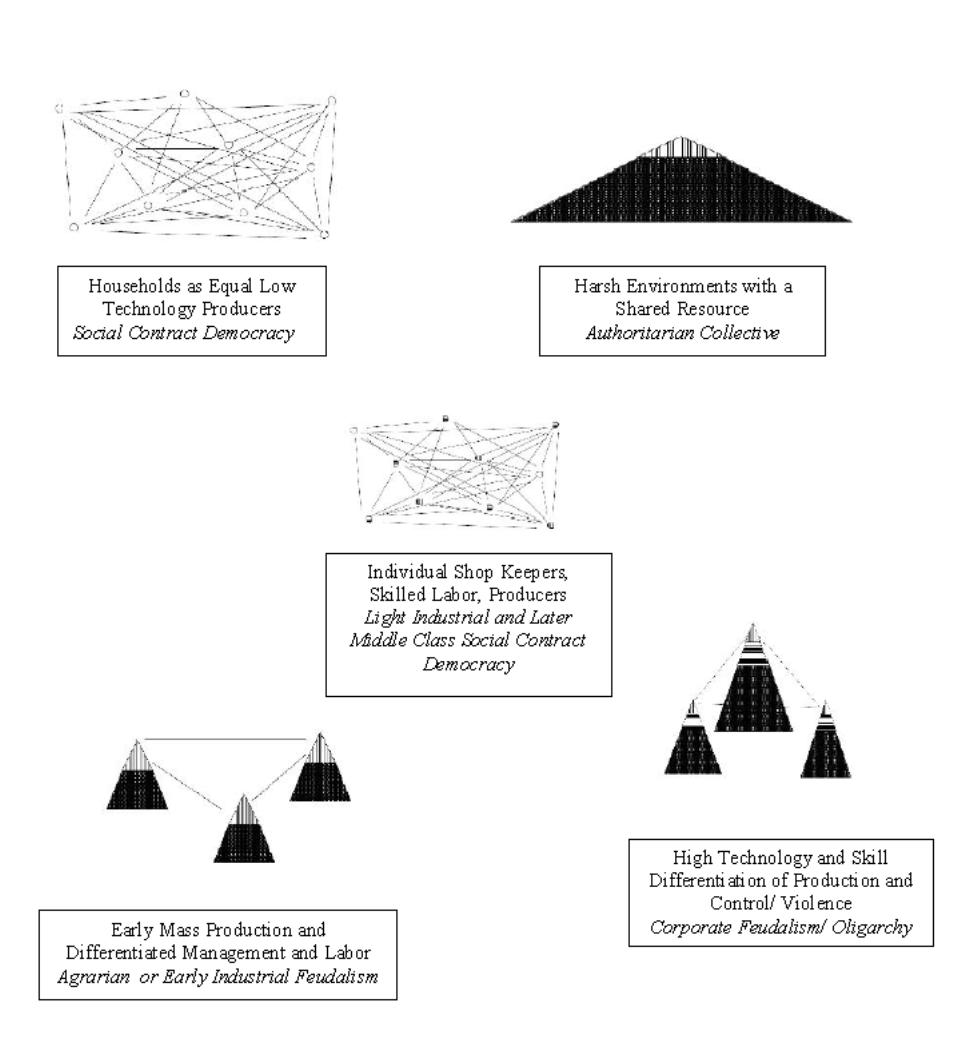
Fig. 1. Political Systems at Level of Individual Rights, Reflecting Means of Economic Production
Future work using additional variables can help to fill in some of the details of different systems that are just presented simply here. The economic production unit is another variable; whether it is the household or community, and political systems in which both genders and non-property owners also hold rights (period of industrialization) differ from those in which only the head of a household production unit (a male property owner) is the rights holder. Household production seems to be the stable economic production unit for non-industrial agriculture. Collectivization works for areas of collective labor needs (like building of dikes or clearing of new lands or building of fortress protection, if the geography requires it) but for agricultural production it is otherwise an unstable form.
No theory is presented here about the distinction between the authoritarian collective and feudalism and whether they co-exist or whether one is an outgrowth of the other. Most likely feudalism, with its more elevated pyramid, reflects a society with trade and warfare that created increased differentiation of status with a need for military protection and construction.
Future work is needed to offer and test theories on the rise of plantation economies and its associated form of feudalism. In the USA, the geography did not isolate groups and promote the formation of feudal systems for protection. It was the choice of certain species for production that favored these inequalities; cotton, tobacco, corn. In both North America, in the south where plantation agriculture relied on imported slaves, and in South and Central America, on haciendas, where the Spanish exploited Native Americans, the form of production was already a part of an imperial system of trade relations and the inequality it reflects is really that of racial inequality and empire rather than a natural appearance of a feudal culture. To investigate this further, one would need to also consider the history of indentured servants in corporate type production in the north in North America, and the serf system in Russia as well as answer the question as to why Native Americans in North America did not also develop these systems, though there are already some environmental explanations suggesting that certain animals or crops needed to enter the system from outside in order to allow for a different stage of technology, population and social organization (Diamond 2009). The empires of Central and South America do, however, reflect this type of production.
Dynamics: Economic and Political Transitions. Once we see how the basic static forms of political systems are related to geography and economic production as well as to technologies, we can then examine whether there are any dynamic pathways of transitions between states that occur with growth of population and development of technologies. Though the causes of technological change are disputed and are beyond the scope of this study, we can at least look at some observed types of system and order them with technological change as a way to examine the few theories that exist for political system evolution, while also offering new ones. The evidence that we do have seems to challenge not only Marx's theory and that of Kuznets but also most contemporary ideologies on the evolution of systems towards democracies. Though neither Weber nor Durkheim said so explicitly, their ideas on ‘bureaucracy’ and potential ‘convergence’ of industrial systems seem to suggest that the actual path of systems is towards political hierarchy, if not totalitarianism, rather than democracy.
Paths of Industrialization and Political Systems: Two different paths towards industrialization and the emergence of the contemporary (corporatist or feudal industrial) ‘industrial state’ (Galbraith 1967) are shown in Figure 2 and Figure 3.
Figure 2 depicts the transition from social contract democracy in countries like the USA to the contemporary form of ‘civil oligarchy’ or ‘inverted totalitarianism’ while Figure 3 shows how agrarian feudal and authoritarian collective systems like Russia and China have taken different paths to arrive at similar Anthropocene era political-economic system forms. Given the technical requirements and the concentration of decision-making in industrial states, the economic and technological choices result in the convergence to a common political system as many theorists predicted some 50 years ago (Galbraith 1967; Bell 1972; Duncan 2014).
The explanation for the move to the industrial state would be that the risk increases once the specialization in the system increases, the information and decision-making becomes naturally concentrated, and the military technology also becomes concentrated.
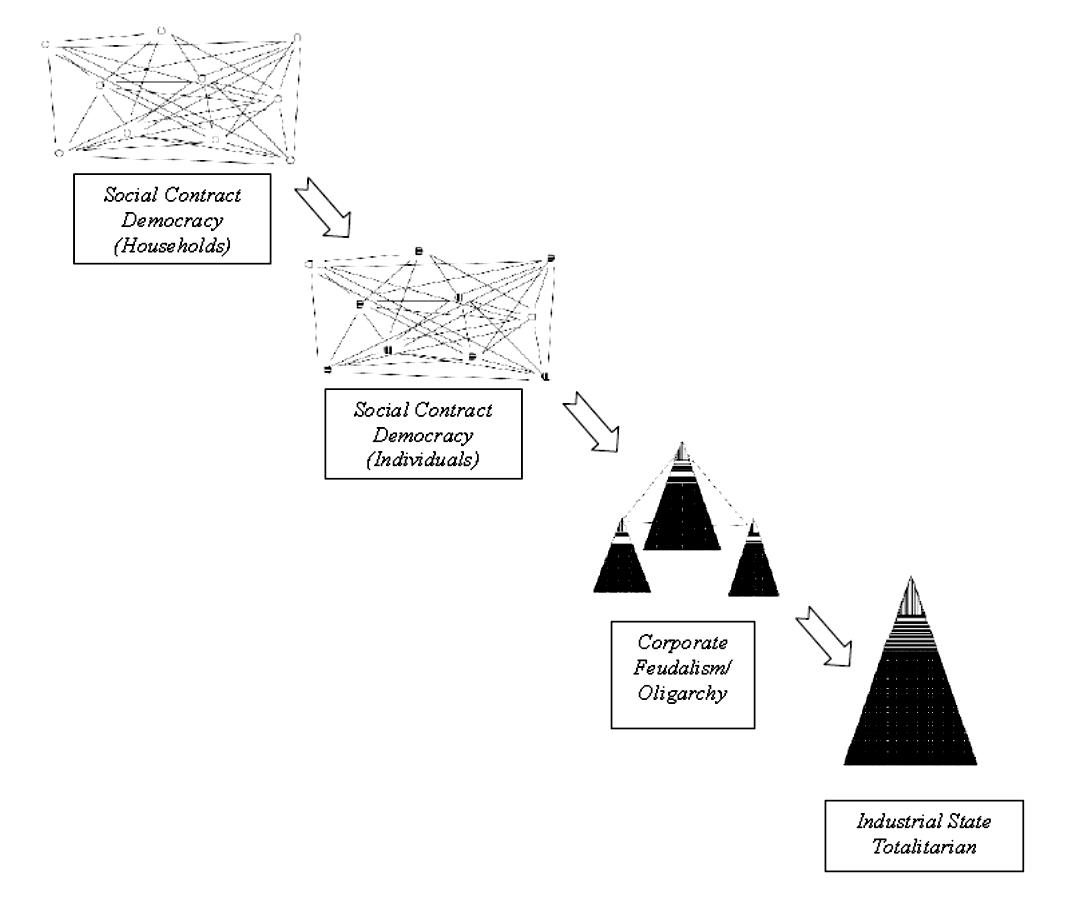
Fig. 2. Impact of Industrialization: The Degradation of Democracy (USA)
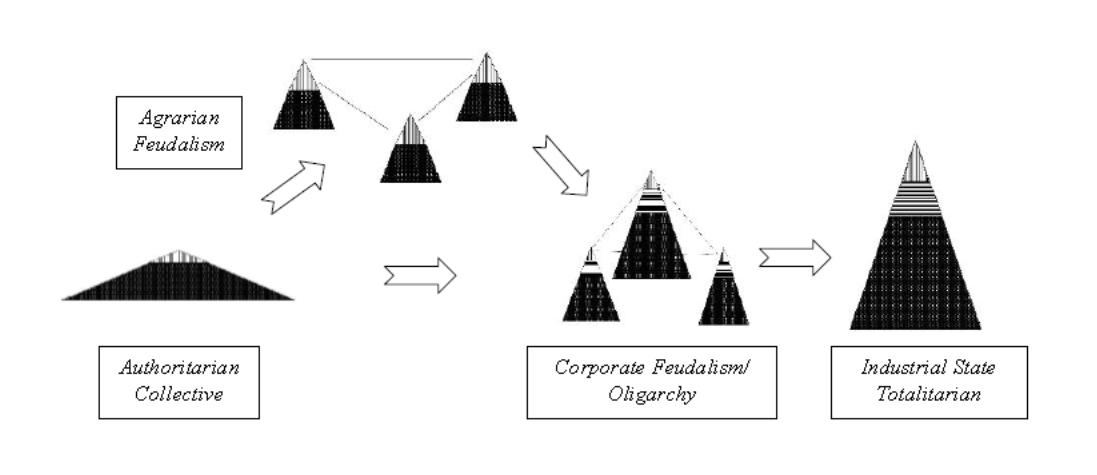
Fig. 3. Impact of Industrialization: Industrialization without Democracy (U.S.S.R., China)
In the USA, political institutions appear the same on the surface over the time of these transitions, but the original bodies of oversight like elected representatives are overwhelmed by the size of corporate and governmental bureaucracies and actual oversight has disappeared, with power shifting to the managers of those bureaucracies (military, national security, corporations) who essentially manipulate the nominal political leadership through a variety of mechanisms. Most of the types of close control through citizen panels, private attorney generals, and equal access to the political tools of oversight (including education, lawyers/courts, and media) have largely disappeared over time and even explanations of how they can be restored become nearly impossible to publish and disseminate (Lempert, unpublished trilogy).
Of course, both of these diagrams are simplifications given the short space of this article, disregarding ethnic differences and internal stratification that already long existed in the USA as well as ethnic stratification in empires like that of Russia and China. Note, however, that the choices of ideology such as ‘capitalism’ or ‘communism’ are not relevant to the analysis and are rhetorical explanations that hide underlying processes affecting political systems.
Reconsidering Theories of Political Evolution through Industrialization, of Kuznets and Marx: Given the historical record of how specific variables drive political systems, we can re-examine and dispel some of the ideologies presented in different industrial states as to how the very transformations that were leading to forms of authoritarianism and control were promoting paths of ‘democratization’. They were not and will not.
Figures 4 and 5 present the theory of Simon Kuznets from the 1950s (Kuznets 1955) that suggested the forced industrialization (essentially the cultural genocide) of non-industrial cultures would make them more ‘democratic’ even while destroying cultural rights and diversity. Kuznets presented a famous ‘curve’ showing how industrialization (euphemistically called ‘development’) would initially lead to inequalities as resources were exploited and technologies were transferred (euphemistically called ‘growth’ and shown on the x-axis in the diagram) but ultimately lead to greater economic (and political) equality (and ‘democracy’), shown on the y-axis in the diagram.
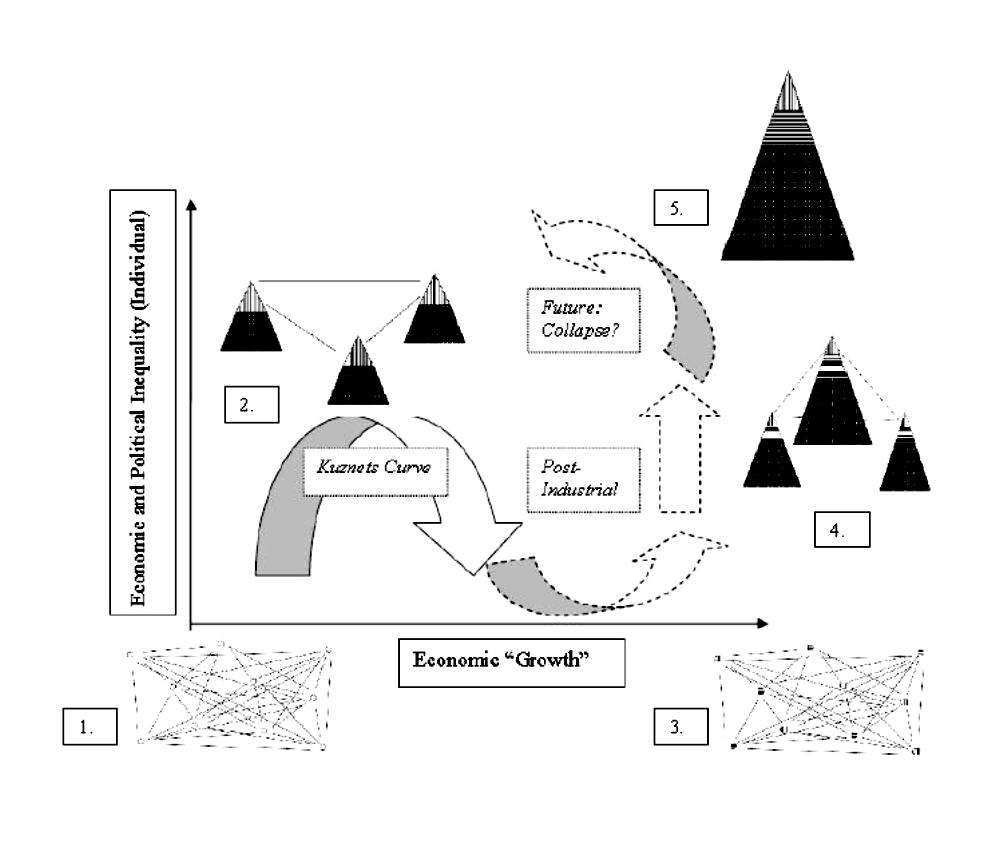
Fig. 4. The Contemporary Illusion of Democratization: The Kuznets Curve Revisited: Favorable Climates: Western Europe and the USA
In Figure 4, the Kuznets curve is presented for three phases for areas of favorable climates that start off looking like social contract democracy with relatively equal landholdings by families. During the industrialization phase, Kuznets suggests that capital is concentrated and mechanization and specialization of agriculture as well as development of heavy industry in agricultural areas (creation of corporate mining or logging towns or steel mill factory towns) leads to inequality. Later, an educated middle class arises, investing in competitive small businesses and emerging as a professional and technical class with equality increasing.
In Figure 5, depicting harsh climates, with collective feudal authoritarian agricultural systems, Kuznets also describes a second phase of higher inequality as well as a third phase of emergence of a professional and technical class below the leadership. While industrialization destroys the original cultures, the changes give the appearance of greater equality and ‘democracy’ with the emergence of competition (independent producers) as well as the ability of individual laborers to contract for industrial work rather than to be tied to roles in community production. The ‘equality’ of women as industrial workers is heralded as an example of this ‘democracy.’
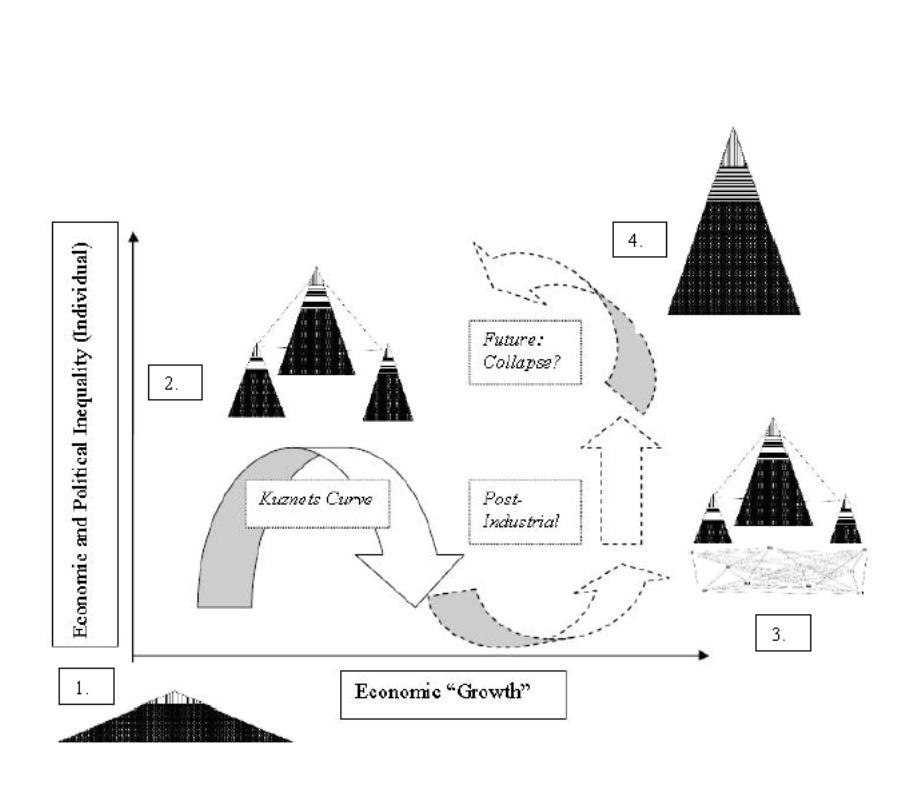
Fig. 5. The Contemporary Illusion of Democratization: The Kuznets Curve Revisited: Harsh Climates: Russia, China, and Southeast Asia
While the Kuznets curves in both cases stop after original cultures are destroyed and societies are urbanized, we now know what happens after these phases. As technology continues to specialize and require higher capital investment, the role of competition and small producers diminishes. Industries consolidate and collectivize. Large concentrations of capital for production result in a system that is too rigid to take risks because of the amount of concentrated investments required for production and because the productive institutions use their concentrated wealth and power to exert political influence. Meanwhile, the technology of police and military control is also too advanced to be widely disseminated (in the way that guns and local militias allowed for competitive power at earlier stages) and also leads to a centralization of power. This is depicted at the fourth stage in both Figures.
What we are also seeing, that is suggested in both figures, is that technological ‘growth’ also ultimately reaches its limits as resources are exploited and exhausted. As growth slows, inequality continues to rise. Given the historical record of civilizations and collapse, a likely outcome is collapse and return to some of the earlier forms, in a long cycle (Lempert 1987; Diamond 2005).
An alternative vision of change is Karl Marx's ‘dialectic’ model of historical transformation, shown in Figure 6. Unlike Kuznets, whose work was much later, Marx's predictions were on a much longer time frame and included step 4 as shown in Figures 4 and 5, as that of either a private elite or a State monopoly of power (that are essentially indistinguishable from the perspective of political equality); industrial state totalitarianism.

Fig. 6. The Historical Illusion of Democratization: Karl Marx's ‘Dialectic’ Fantasy of Systems Evolution
Marx did not predict the ‘collapse’ of the system due to an exhaustion of resources but believed instead that the inequalities would trigger revolution and establishment of distributions of economic and political power at the community level, with communities self-controlling the means of production. The reason this is a fantasy is because it never dealt with the reality of the technologies of military and police control and production and how the functions of specialized information and coordinated control could be distributed. The idea of the ‘withering away of the State’ (Marx and Engels 1848; 1906) and of the separation of ownership from administrative technological specialization and organization is a myth. All we have seen in the historical record is shifting of forms of elite control and various ways of pacifying or controlling populations without any fundamental shifts in control, alongside some limited territories of small sizes, providing technocrats for specific industries (such as Sweden) and functioning as islands of equality and democracy in particular niches.
Imagining the Political Future: If political systems are patterned by economic and technological variables and if specialized technologies and concentrations of capital preclude democratic forms of government, the only way for democracy to emerge would be if basic needs and security were met through new kinds of more egalitarian technologies. That does not seem likely.
More than thirty years ago, authors began to propose (or record their wishes) that new technologies would emerge that would be small scale and in the home, leading to a ‘third wave’ that would be democratic (Toffler 1980; Bell 1972). The idea was not only of a communications revolution (open access internet and available technology) but predicated on local control of energy (solar and wind), local food production and distributed military power. Thus far, military technology remains specialized and controlled, expensive (nuclear, drones), information is controlled, and food and other production is centralized on the global model of local specialization without self-sufficiency/import substitution. As the current fossil fuel based political economy collapses, some of these decentralized communities are possible (or probable) but not decentralized control of high technology military or police power. Moreover, the existence of those technologies and the continuing impacts of climate change also makes local sustainability problematic.
Although some may suggest that the ‘democratic socialist’ countries like Sweden, from the 1950s to about 1990 are models of these new, sustainable economies, where government was highly redistributive and democratic, those systems may really just have been examples of localized ‘upper middle class’ communities in the global system that have essentially disappeared since 1990. There are two important changes that have occurred in those countries after 1990. The first is the emergence of large industry and high technology, including electronics and arms manufacturing, requiring high labor differentiation and large amounts of capital. Before this, Sweden was industrial but it still had small villages with light industries (wood, food processing). This emergence is also a result of globalization and the influence of the United States in political pressure and economic contracts. The second is the changed demographics with countries like Sweden both requiring lower class laborers and in-migrations of laborers of different ethnicities who are now lower classes in systems that have also lost their features of democratic political equality.
PREDICTING COMPLEX SYSTEMS: FEDERALISM AND DECENTRALIZATION
Static Forms. The basic forms of complex systems like federalism, local autonomy with tributary relations, and different types of empires can also be linked to geographic-economic variables and to technologies of transport, communications and militarism that promote interaction and control.
Table 3 offers a simple matrix of systems that shows the political forms that arise where there are either existing equalities or inequalities in distributions of resources and development potential (Diamond 2009) and where there are high or low barriers to communications (or control).
Table 3
Political Systems at Community Level as a Function of Ecosystem Equality/Inequality and Geography
|
|
Geographic and Communications Distance | |||
|
Low |
Medium
|
High
| ||
|
Ecosystem and Technological Inequality |
Low |
Federalism |
Federalism with Full Autonomy |
Isolation or Trade |
|
High |
Empire with Concentrated Control |
Tributary System with Local Autonomy |
Local Spheres of Influence | |
Since it is easier to visualize some of these forms and their origins in illustrations, some pictorial versions are offered in Figure 7.
Figure 7 depicts three types of systems.
– A federal system is one where different environments allow different relatively equal communities to develop and where they are able to communicate with each other. The east coast of the United States, both during the period of indigenous peoples before European colonization and then during the early colonial period when the original U.S. ‘states’ actually represented different ethnic colonies (‘New England’, ‘New Sweden’, ‘New Amsterdam’, German Pennsylvania, etc.) was originally a federal system with cultural diversity (Lempert unpublished trilogy). The American system was actually based on the Iroquois federal model. The European Community might fit this model today.
– A tributary system with autonomous governments has an overseeing power that is too far away to impose colonial rule or where there are local boundaries to protect autonomy. The ‘muang’ system of ancient Laos and Thailand fits this picture, with each local valley area as an autonomous ‘muang’ but under tribute to China or Viet Nam or other regional powers. Originally the muangs had some ethnic diversity as local Mon Khmer peoples were Indianized, but ultimately they were independent only under different ‘Tai’ kingdoms (Habersteijn 1989).
– Where there was a particularly strategic area for control such as a river delta, an empire was likely to arise that could spread its centralized control outward. This is Harris' model of the Ancient Near East (‘Fertile Crescent’) and of Egypt (the Nile River Delta) (Harris 1977). The Han Chinese also seem to fit this model with its control over the Yellow River, as do the Vietnamese with control over the Red River, though Wittfogel's theory that all of Asian societies could be explained by this model of ‘Oriental despotism’ or ‘hydraulic empires’ only applies to areas of these major river systems and probably to Khmer control over the Tonle Sap, but not to ocean going peoples like the Cham or to the Tai peoples, as described above (Wittfogel 1957).
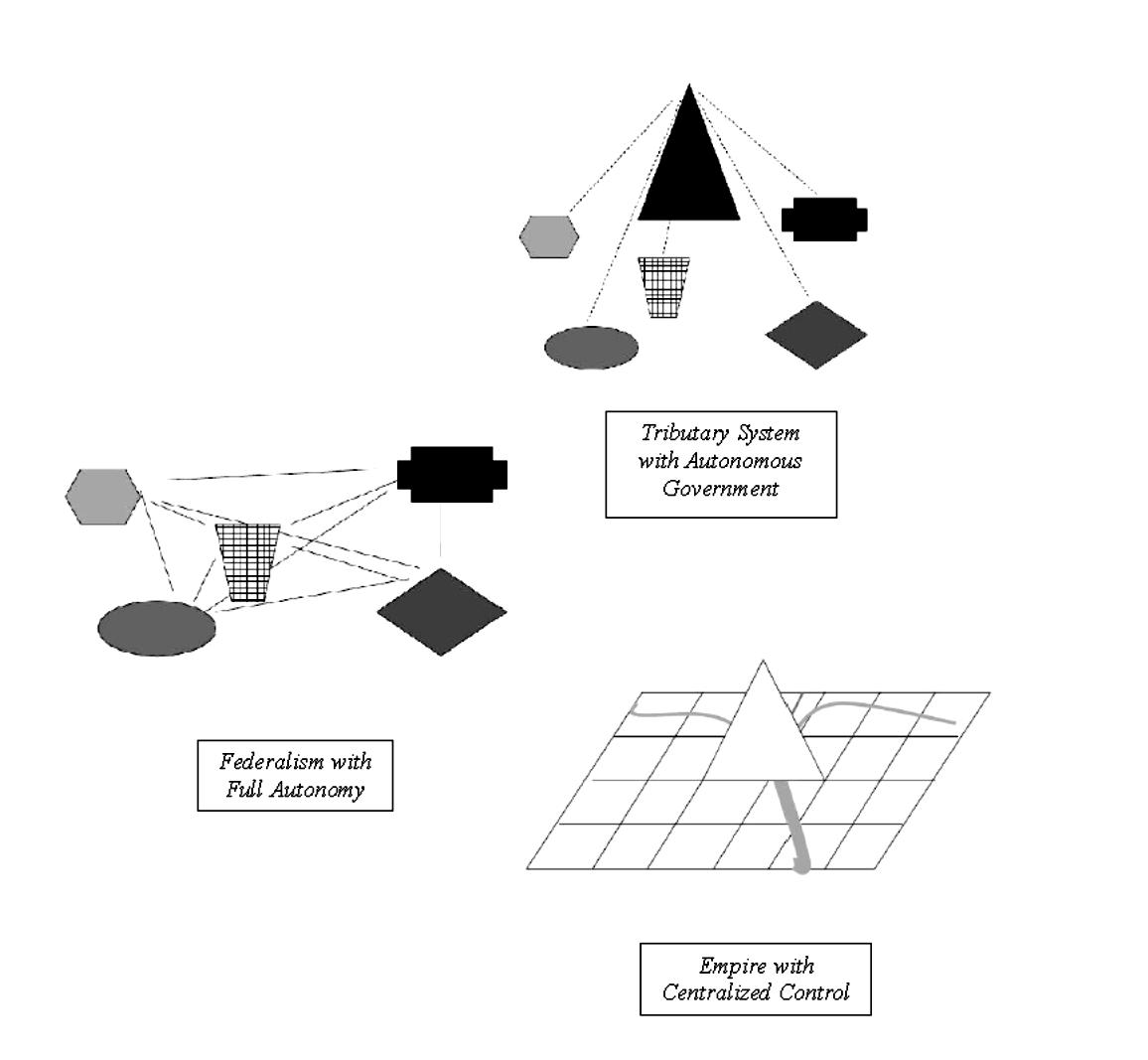
Fig. 7. Political Systems at Level of Communities, Reflecting Geography and Technology
Dynamic Transitions. The history of federal systems and tributary systems is that they seem to disappear over time with ethnic differences eroded as ethnic groups are absorbed and assimilated. While geographic differences remain, over time federalism becomes simply a means of administrative decentralization rather than ethnic autonomy. Meanwhile, ethnic groups that do not retain their economic production on territories are generally absorbed or assimilated at faster rates unless they are placed specifically in economic and social roles (or castes) in an economic system. Different processes seem to be at work historically and today that homogenize empires.
Figure 8 depicts the transitions of tributary systems and collective authoritarian systems into homogeneous empires as technologies and communications systems make areas easy to control from the center and when populations of a dominant group expand outward into the surrounding territories over time.
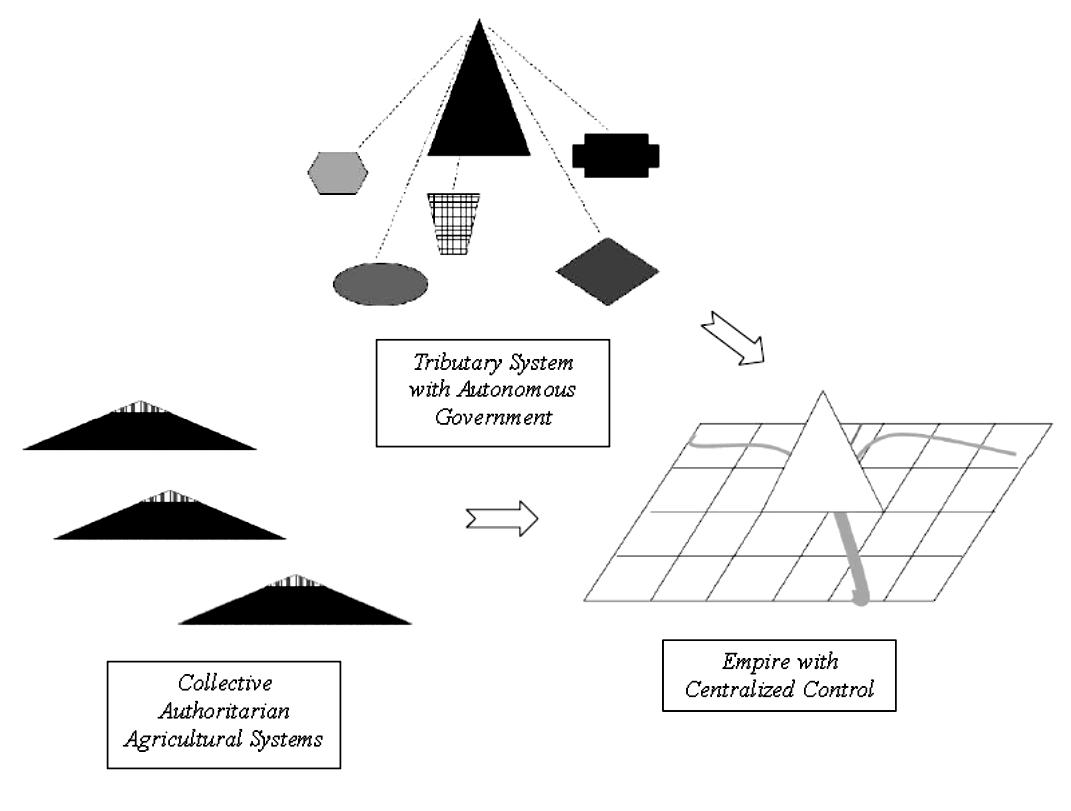
Fig. 8. Emergence of Agrarian Empires with Weak Geographic Borders
Figure 9 suggests two different pathways for the degradation of ethnic federalism and its replacement with centralized imperial control. Historically, with the expansion of a central empire's population and with technological improvements in communications, transportation, and weaponry, competing cultures are ultimately absorbed. In the USA, for example, almost all ethnic identities of the States have disappeared (due to cultural hegemony and assimilation pressures) as have Native American autonomous areas and cultures (due to expansion of European populations and taking of lands) and as have alternative economies, including the plantation economies of the southern States (as a result of defeat in the Civil War). Industrialization, itself, offers another mechanism for disintegration of federalism. Movement of labor and capital disrupts communities and their traditional forms of economic production and replaces them with specialized production that breaks local sustainability and requires integration into a trade economy. Ultimately, the consolidation of companies concentrates control in the corporate and banking centers, taking it away from local areas in a homogenized system.
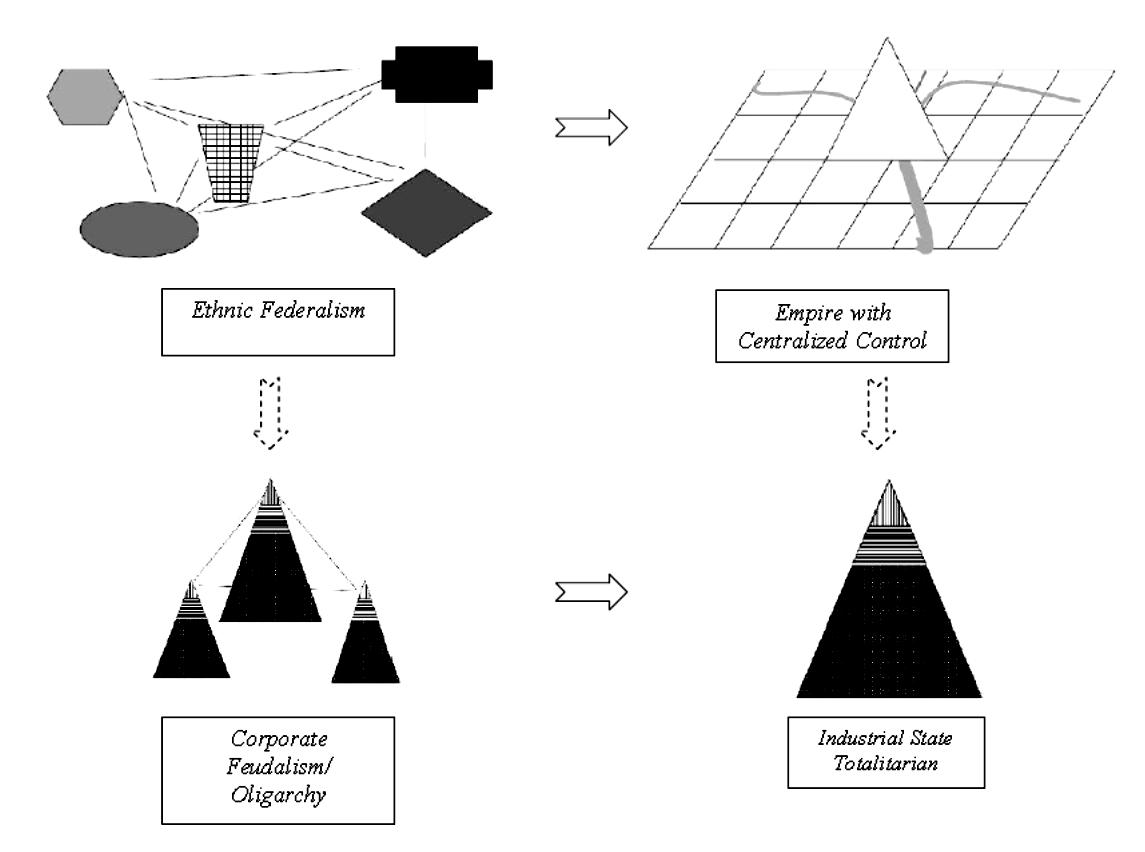
Fig. 9. Ethnic Federalism Degraded to Administrative Federalism
The processes of control that seem to be occurring today are depicted in Figure 10 (from Lempert 1993 and 1995). They replicate the process depicted in Figure 9 but now on a global, international scale with corporations now exerting influence across borders, destroying local cultures and their political systems and absorbing them as specified production areas in the corporate feudalism of the ‘New World Order’ in a process that is now long acknowledged.
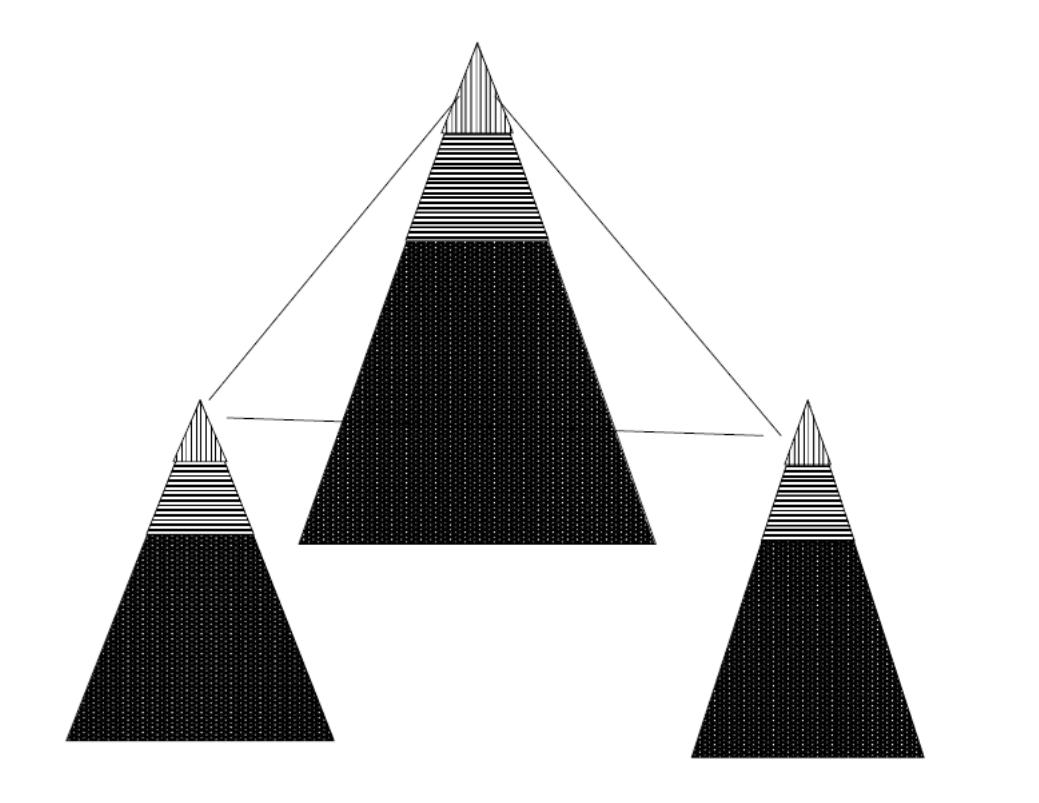
Fig. 10. Globalization: Corporate Feudalism of the ‘New World Order’
Ambiguous Forms of Political Systems during the Anthropocene Era: Distinguishing ‘Governments’ from ‘Concessions’ and from Perpetual Battlefields
While the descriptions above may seem to offer space for inclusion and explanation of most historic and contemporary political systems, there are at least two anomalies in the classification of political systems that deserve mention here. A number of modern countries have governments that do not seem to meet the definition of political systems either because the local ‘government’ seems to have no connection with local people (and may be better described as a ‘concession’ or ‘corporate charter’ over a geographic area rather than a government) or because continuous fighting by warlords or armies, with the instigation of foreign powers and arms, may render the area as a constant battle zone with no real economy or stability at all that could be described as a ‘political system’. Such are increasingly the modern realities of the Anthropocene Era.
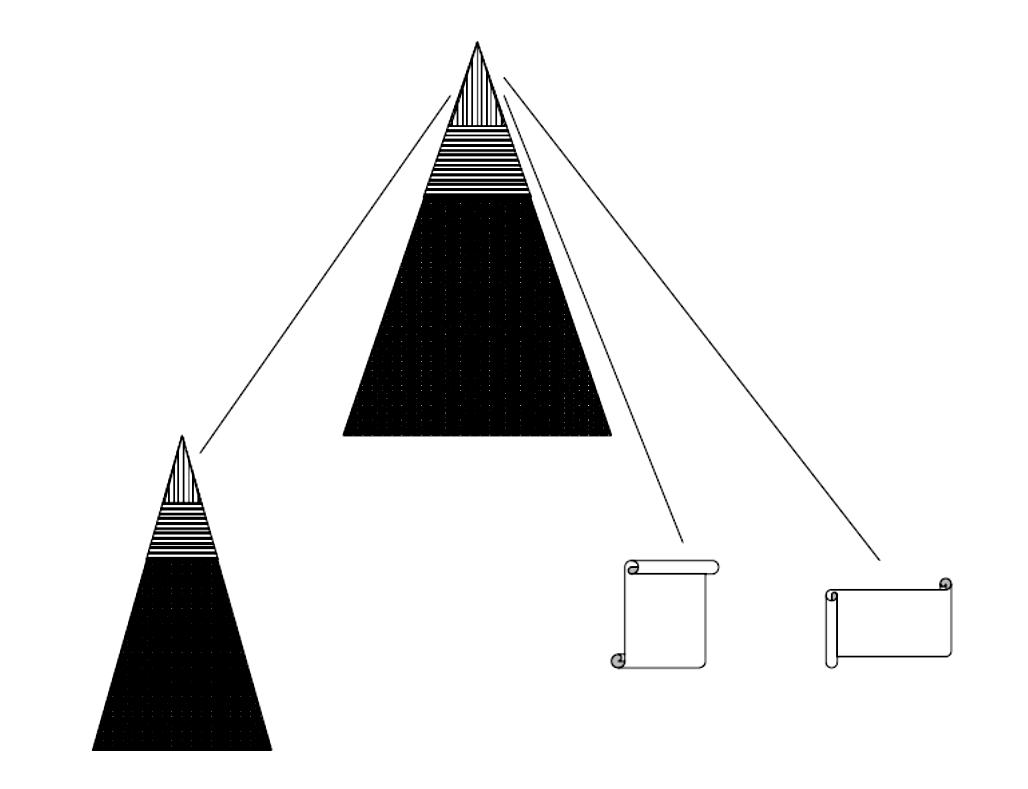
Fig. 11. Governments and ‘Concessions’
The model of a ‘concession’ and its place in the contemporary global system is depicted in Figure 11. This may be an ancient political form, dating back to colonial ‘charters’ like those of the Dutch East India Company in the seventeenth century or the ancient Chinese form of administrative posts for ruling over foreign areas that were sold commercially and then used to extract rents. Countries today like Kyrgyzstan, Laos and Cambodia seem to clearly fit the model and can be described briefly. They differ from colonial governments or pressured governments because they do not even have the basic features of governance. Leaders may be from the local ethnic group and there may be a formal system of political institutions including military, police and government officials, but not only may these leaders be entirely unaccountable to the people in the countries but there may be no relation at all between the well-being of the people within the country's borders and decisions by their ‘leaders’. While many political scientists have described ‘dependency’ relations of governments (Frank et. al. 1972; Wallerstein 1979) or identified ‘client states’ (Chomsky and Herman 1979) or have simply ridiculed such systems as ‘kleptocracies’ or some other form of corrupt and destructive government, it makes more sense to classify these systems as something other than local political systems that have been subject to pressure or manipulation. Rather than call them political systems, they are better viewed as ‘concessions’ over resources (including people in the area), effectively controlled by outsiders through intermediaries.
The key to distinguishing modern ‘concessions’ is to examine the source of their revenues, their expenditures and to whom the leaders are really accountable (and fear). In the case of Kyrgyzstan, Laos and Cambodia, at least half of the country's revenues come from sale of resources to foreigners (mining in Kyrgyzstan, hydropower, forests, mining and plantation lands in Laos, and foreign tourist sites in Cambodia) and foreign aid (Evans 1999; McCoy 1972; Stuart Fox 1997; UNDP Kyrgyzstan 2008; Lempert 2007). Government spending is limited almost entirely to military and police to protect the resources and leaders, with almost no investment in public services. There is no link between protection of the country's wealth or per capita increase in the wealth of citizens and taxes for payment of government salaries. In fact it is in reverse. The incentive of government officials is to sell off the country's wealth to enrich themselves. Their interest is in impoverishing the country. Their backers are the foreign countries to whom they are selling off the resources.
The governments essentially do nothing more than manage their resource concessions. They are companies with military forces and have no sense of nationality or connection to the people or the resources. Police forces provide no services to locals other than what individuals are willing to pay to recover stolen property and retribution for harms. Generally, the belief is that the police are in league with the perpetrators. Courts are for sale. Utilities are all government monopoly concessions for profit. Schools and other services are essentially all private with citizens having to pay individually on a market basis. Cultural events and rituals are turned into sales events to advertise government monopolies like alcohol, or to promote products. Parliaments rubber stamp foreign laws paid for by foreigners and foreign projects (like a US$ 2 million Swiss project in Laos) pays Parliamentary officials to meet the public to create the illusion of a link between them. National artistic and religious treasures are stolen or merchandised.
Though not depicted here, there also increasingly seem to be countries and territories that have been destabilized with their traditional political systems destroyed and with armed gangs or warlords contesting power, often as representatives of outside powers. This is also a new reality that is becoming long term.
DISCUSSION AND CONCLUSION
The implications of these findings for policy and on social science and contemporary world views are deep but cannot be presented here due to space limitations. They are available from the author and will be available in the on-line version of this article.
REFERENCES
Adams, R. 1966. Evolution of Urban Society. Chicago: Aldine Publishing Company.
Bell, D. 1972. The Post-Industrial Society: the Evolution of an Idea. Survey 17 (2):102–168.
Bouté, V. 2011. En Miroir du Pouvoir: Les Pounoy du Nord-Laos: Ethnogenese et Dynamiques d'Integration. Paris: Ecole Francaise d'Extreme Orient.
Carneiro, R. 1970. A Theory of the Origin of the State. Science 169: 733–738.
Chomsky, N., and Herman, E. S. 1979. Political Economy of Human Rights. Boston, MA: South End Press.
Diamond, J. 2005. Collapse: How Societies Choose to Fail or Succeed. New York: Penguin Books.
Diamond, J. 2009. Guns, Germs, and Steel: The Fates of Human Societies. New York: W.W. Norton & Company.
Duncan, B. 2014. Convergence Theory Revisited: Kafkaesque Global Bureaucracies of Our Times: With an Example of a Tool for Measuring whether Approaches to Accountability are Real or Sham. Social Evolution and History 13 (1): 67–98.
Durkheim, E. 1964 [1893]. The Division of Labor in Society: Study of the Organization of Higher Societies. Glencoe, Illinois: The Free Press.
Earle, T., and Johnson, A. 1987. The Evolution of Human Societies: From Foraging Groups to Agrarian States. Stanford, CA: Stanford University Press.
Evans, G. (еd.) 1999. Laos: Culture and Society. Chiang Mai: Silkworm Books.
Evans-Pritchard, E. E. 1940. The Nuer: Description of the Mode of Lowland and Political Institutions of Nilotic People. Oxford: Clarendon Press.
Fernandez-Arnesto, F. 2000. Civilizations: Culture, Ambition, and the Transformation of Nature. New York: Free Press.
Flannery, K., and Marcus, J. 2012. The Creation of Inequality. Cambridge, MA: Harvard University Press.
Fried, M. H. 1967. The Evolution of Political Society: An Essay in Political Anthropology. New York: Random House.
Galbraith, J. K. 1967. The New Industrial State. New York: Houghton and Mifflin.
Gilens, M., and Page, B. 2014. Testing Theories of American Politics: Elites, Interest Groups and Average Citizens. Perspectives on Politics 12 (3): 564–581.
Gunder Frank, A., Cochroft, J. D., and Johnson, D. L. 1972. Dependence and Underdevelopment: Latin America's Political Economy. Garden City, New York: Anchor Book.
Habesteijn, R. 1989. Circles of Kings: Political Dynamics in Early Continental Southeast Asia. Dordrecht: Foris.
Harris, M. 1977. Cannibals and Kings: The Origins of Cultures. New York: Random House.
Kottak, C. 1972. Ecological Variables in the Origin and Evolution of the African States. Comparative Studies in Society and History 14: 351–380.
Kuznets, S. 1955. Economic Growth and Income Inequality. American Economic Review 45: 1–28.
Leach, E. 1954. Political Systems of Highland Burma: A Study of Kachin Social Structure. Cambridge, MA: Harvard University Press.
Lempert, D. 1987. A Demographic-Economic Explanation of Political Stability: Mauritius as a Micro-Cosm. Eastern Africa Economic Review 3 (1): 77–90.
Lempert, D. 1993. Changing Russian Political Culture in the 1990's: Paradigms, Parasites and Perestroika. Comparative Studies in Society and History 35 (3): 628–646.
Lempert, D. 1994. The Proposed Constitution of Ukraine: Continuity Under the Banner of Change: With a Model for Authoritarian to Democratic Transitions. Demokratizatsiya 2 (2): 268–296.
Lempert, D. 1995. Daily Life in a Crumbling Empire: The Absorption of Russia into the World Economy. In 2 vols. New York: Eastern European Monograph Series, Columbia University Press.
Lempert, D. 2007. Foreign Aid: Creating Conditions for the Next Civil War. Phnom Penh Post, January 12–26, Volume 16, No. 1.
Lempert, D. 2009. A Dependency in Development Indicator for NGOs and International Organizations. Global Jurist. Volume 9, Issue 2, Article 6. URL: http://www.bepress.com/gi/vol9/iss2/art6
Lempert, D. 2011. A Democracy Building Democratic Project Indicator for NGOs and International Organizations. Global Jurist 11 (2). Article 4. URL: www.bepress.com/gj/vol11/iss2/art4/; http://www. degruyter.com/view/j/gj.2009.9.2/gj.2009.9.2.1296/gj.2009.9.2.1296. xml?rskey=kmzvhP&result=1&q=Lempert,%20David.
Lempert, D. 2014. Classifying Cultures by Their Relations in Groups: Drawing from Models in Psychology and Ecology. Social Evolution and History 13 (1): 99–134.
Lempert, D. (Unpublished manuscripts) Copycat Pirates of ‘Indo-China’: The Vietnamese Identity through Time and Modern Sparta: Daily Life of the Kinh Vietnamese: Hanoi Hillbillies.
Lempert, D. (Unpublished trilogy) Volume I: Theories of Democracy; Volume II: A Return to Democracy: The Modern Democracy Amendments; Volume III: A Return to Community: The New Federalist Amendments.
Malinowski, B. 1920. Kula: The Circulating Exchange of Valuables in the Archipelagoes of Eastern New Guinea. Man 20: 97–105.
Marx, K., and Engels, F. 1848. The Communist Manifesto. London.
Marx, K., and Engels, F. (Eds.) 1906. Capital: A Critique of Political Economy. New York: Modern Library.
McCoy, A. W. 1972. The Politics of Heroin in Southeast Asia. New York: Harper Torch Books.
Price, T. D., and Feinman, G. M. 2010. Pathways to Power: New Perspectives on the Emergence of Social Inequality. Springer Verlag.
Reich, R. 2014. The Disease of American Democracy. Common Dreams website, August 20. URL: www.commondreams.org/views/24/08/ 20/disease-american-democracy.
Sahlins, M. 1960. Evolution and Culture. Ann Arbor, MI: Ann Arbor Paperbacks.
Scott, J. 2009. The Art of Not Being Governed: An Anarchical History of Upland Southeast Asia. New Haven, CT: Yale University Press.
Service, E. R. 1975. Origins of State and Civilization. New York: W. W. Norton & Co., Inc.
Shibutani, T., and Kwan, K. 1965. Ethnic Stratification: A Comparative Approach. New York: MacMillan & Co.
Stuart Fox, M. 1997. A History of Laos. Cambridge: Cambridge University Press.
Toffler, A. 1980. The Third Wave. New York: Bantam Books.
UNDP Kyrgystan. 2008. Legal Empowerment of the Poor Project Document (Draft), February 21. On File with Author.
Van der Waal, F. 1982. Chimpanzee Politics: Power and Sex among Apes. London: Jonathan Cape.
Wallerstein, I. 1979. An Historical Perspective: The Emergence of the New Economic Order. In Wallerstein, I. (ed.), The Capitalist World Economy. New York: Cambridge University Press.
Weber, M. 1947. Theory of Social and Economic Organization. (A. M. Henderson and T. Parsons transl.) New York: Free Press.
Wittfogel, K. A. 1957. Oriental Despotism: A Comparative Study of Total Power. New Haven, CT: Yale University Press.
Wolf, E. 1982. Europe and the People without History. Berkeley, California: University of California Press.
Wolin, S. 2003. Illiberal Democracy. The Nation, May 19.
